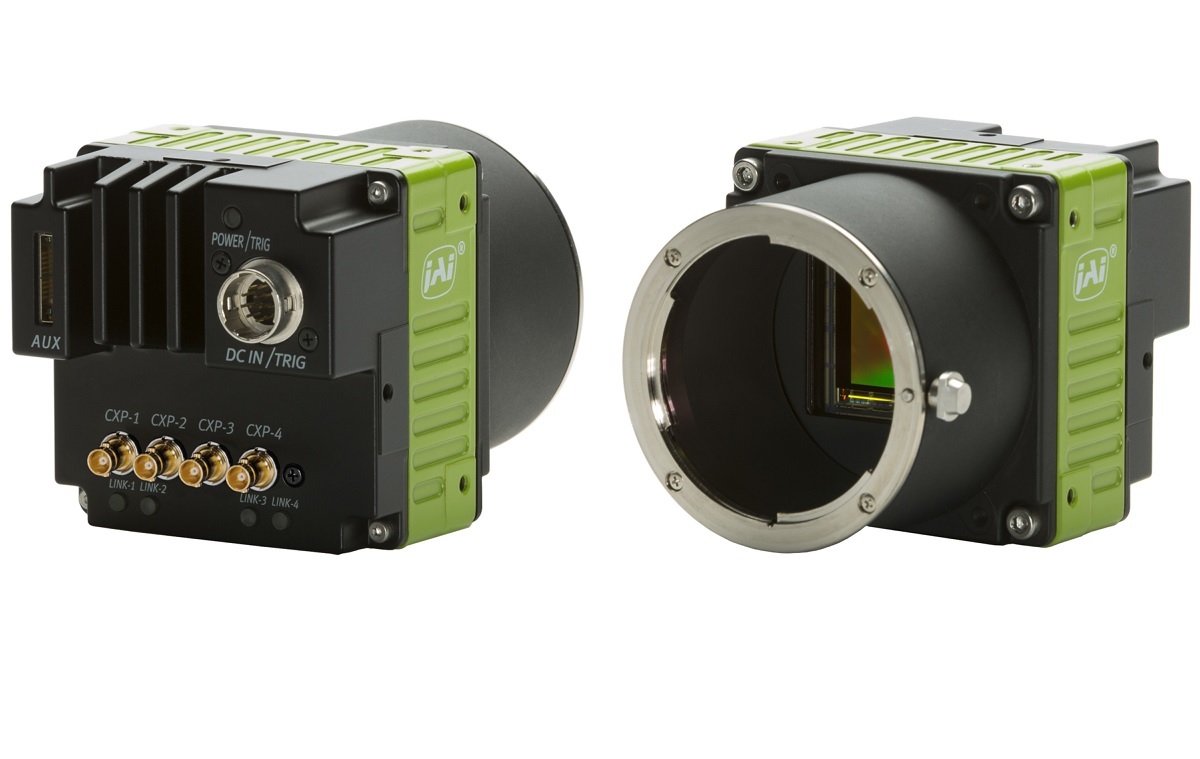COPENHAGEN – 1 February 2021 – JAI has added four more models to its 45-megapixel high performance industrial camera offering. The new cameras, which like JAI's previous 45-megapixel cameras are part of the company's Spark Series, are equipped with CoaXPress v2.0 interfaces capable of providing data transfer at the fastest rate currently supported by the CoaXPress standard – 12.5 Gbps per lane.
The SP-45000-CXP4A (offered in monochrome and color versions) has a four-channel CXP-12 interface with a maximum data transfer of 50 Gbps. This enables the camera to provide 8K TV resolution output (7680 x 4320 pixels) at 60 fps or higher for 8-, 10-, or 12-bit pixel formats. Full resolution, 8-bit, 44.7-megapixel output (8192 x 5460) can be delivered at 52 fps or at 47 fps for 10- or 12-bit output. The faster CoaXPress interface gives users greater flexibility to reduce the number of lanes used, thereby saving on cabling costs, or to work at greater bit depths when maximum image quality and dynamic range are required.
The cameras feature the XGS 45000 CMOS imager (global shutter) from OnSemi, which delivers excellent image quality thanks to a dark noise rating of only 4.5 electrons, and a standard dynamic range of 67 dB. A special built-in High Dynamic Range (HDR) mode that uses a dual gain technique applied to a single captured image, boosts the dynamic range to 73 dB with a maximum frame rate of 30 fps. HDR output can be delivered in a 14-bit linear format, or in a knee-point compressed format at a bit depth of 8, 10, or 12 bits.
JAI also introduced the SP-45001M-CXP2A (monochrome) and SP-45001C-CXP2A (color). These models also feature CoaXPress interfaces with CXP-12 lane speeds but utilize a reduced-speed version of the XGS 45000 CMOS imager. Because of this, these models have a two channel CoaXPress interface that saves on cabling cost and complexity while also carrying a price tag that is approximately 20% lower than the full-speed models. The lower price point enables vision system designers to maximize the cost competitiveness of their systems, especially for applications such as inspection of flat panel displays, semiconductors, PCBs, and other systems where multiple high resolution cameras are often utilized.
For lower-speed applications, image quality can be further enhanced by using the camera’s built-in frame integration capabilities to average up to 8 consecutive frames, thereby reducing shot noise in the image.
The image sensors in all four new models have 3.2-micron square pixels and a diagonal of 31.5 mm (Super 35 mm format). This enables the cameras to fit into a compact 62 x 62 x 84.2 mm form factor. Other key features available on all models include single- and multiple region-of-interest (ROI) capabilities, horizontal and vertical image flip, a sequencer trigger function, automatic level control combining auto-shutter and auto-gain capabilities, and a built-in function for controlling lenses connected via a Birger Mount. 1x2, 2x1, and 2x2 binning, plus an edge enhancement function, are available on the monochrome models only.
In addition to electronics-related applications, the combination of high resolution, high speed, HDR, and high image quality makes these new cameras suitable for applications such as broadcast sports, traffic and street mapping, virtual reality, surveillance and facial recognition, metrology, and more.
About JAI
JAI is a manufacturer of high quality, industrial-grade cameras for the machine vision, transportation, food & beverage, aerospace, medical and scientific markets.
JAI’s broad product line features high performance progressive scan CMOS cameras with spatial resolutions up to 45 megapixels. It also includes a range of innovative multi-sensor prism-block cameras including both area scan and line scan models.
Physical interfaces include the Camera Link ® , GigE Vision ® , CoaXPress, and USB3 Vision high performance digital standards, as well as SFP+ fiber optic transmission.
JAI cameras help improve customer businesses in a variety of ways, whether by improving quality and accuracy, lowering costs, increasing yields, or simply enabling better service. In addition to cameras, JAI’s traffic solutions group is one of the world’s leading manufacturers of specialized traffic systems. Solutions are based on JAI-developed hardware and software, which is often integrated with third-party products.













